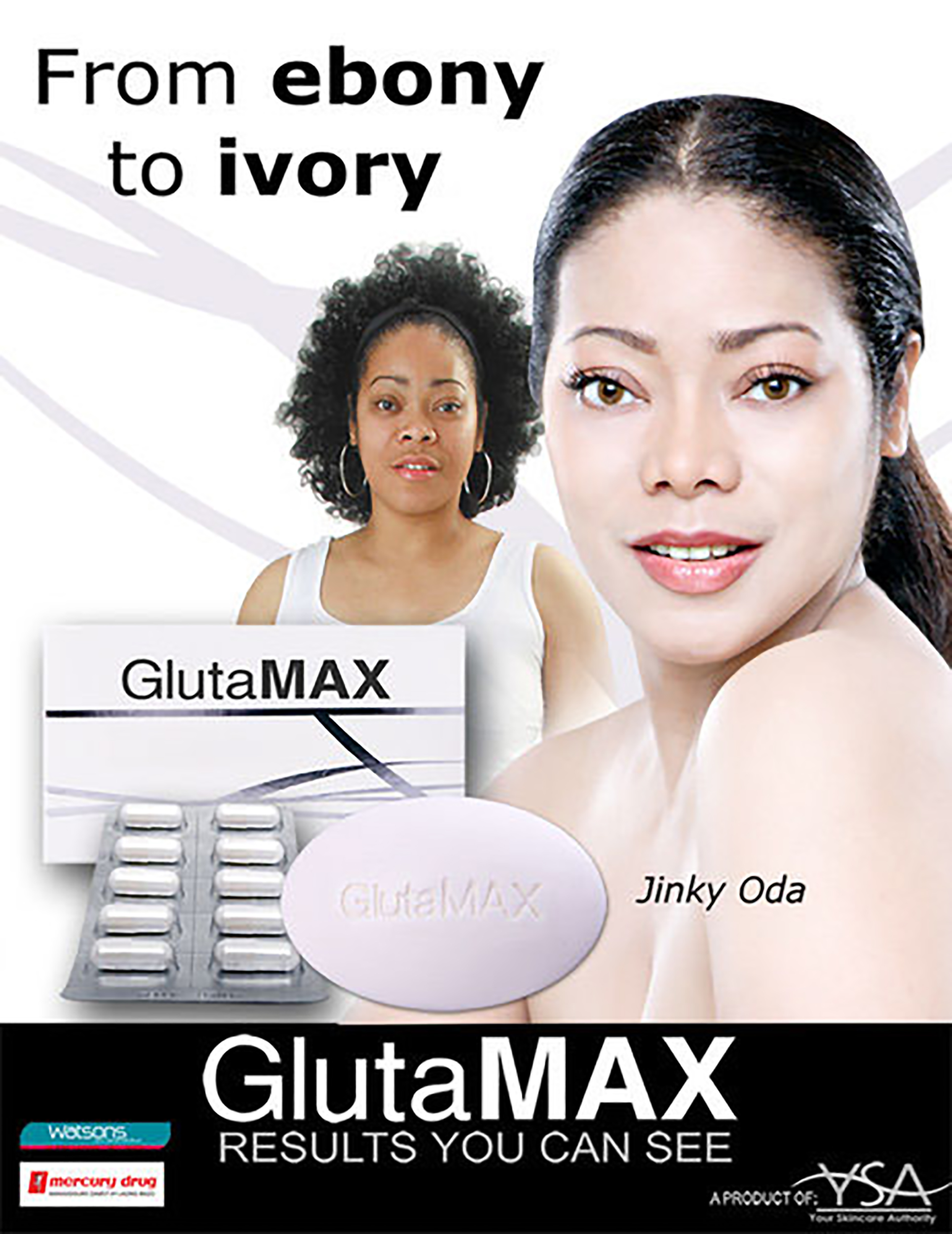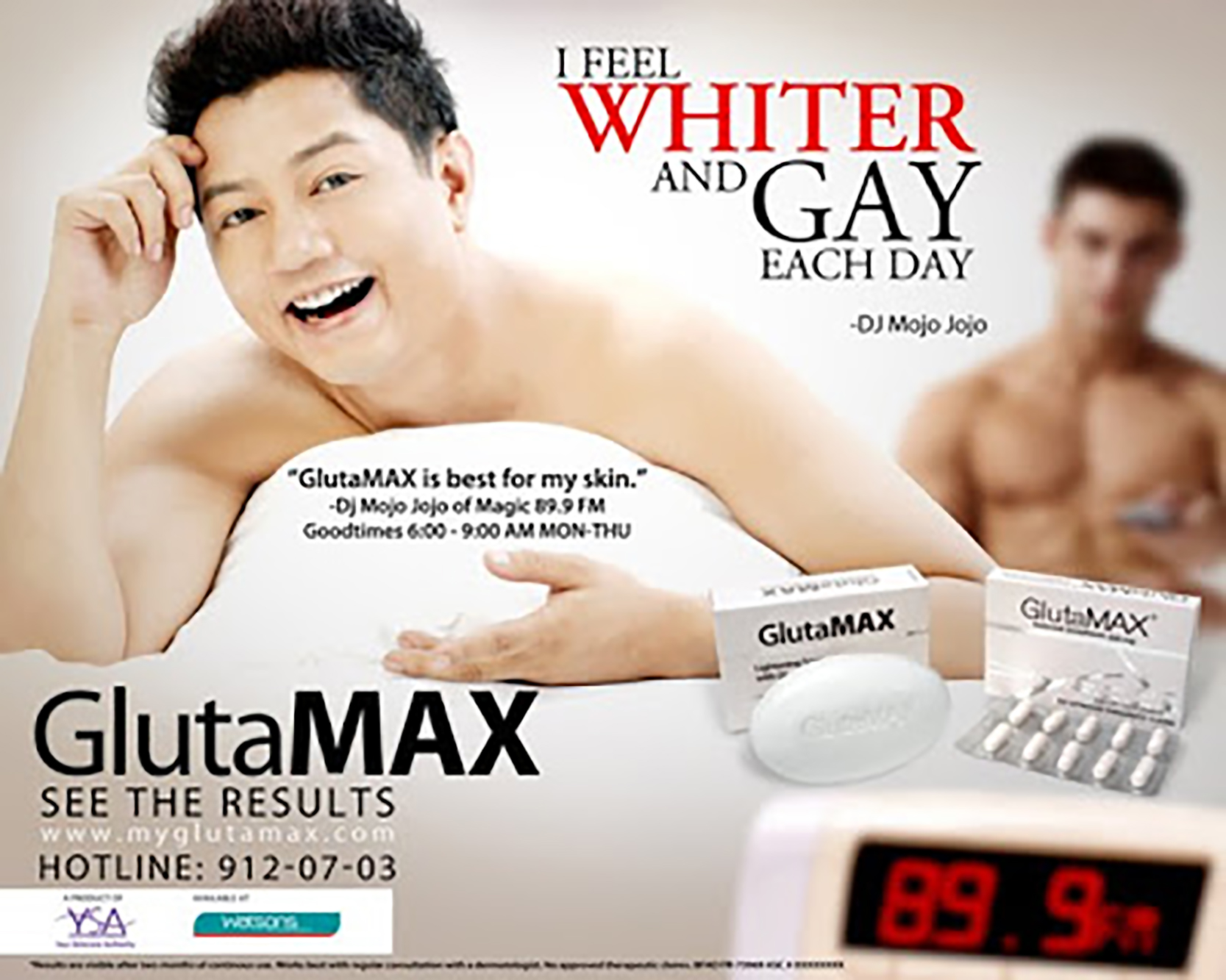2}
∗❦∗ EROS IDEOLOGIES ∗❦∗
{2
An Inquiry by J. S.
∗❦∗
EROS IDEOLOGIES
∗❦∗
EROS IDEOLOGIES
∗❦∗
Decolonization is a concept and a practice that refers to analyzing the histories of dominance of one nation or state over another and the myths that were necessary to rationalizing political, economic, and social subjugations by claiming that the cultures and humanity of the colonized were inferior.
—Laura E. Perez, Eros Ideologies
∗❦∗
EROS IDEOLOGIES
∗❦∗
EROS IDEOLOGIES
∗❦∗
1 Supreme Court of the United States, “U.S. Reports: Downes v. Bidwell, 182 U.S. 244 (1901),” Library of Congress, 1901. 287.
2 Hazel M. McFerson, Mixed Blessing: The Impact of the American Colonial Experience on Politics and Society in the Philippines (Westport: Greenwood Publishing Group), 2013.
3 Roger Lee Mendoza, “The skin whitening industry in the Philippines,” Journal of Public Health Policy 35, no. 2 (May 2014): 220. https://www.jstor.org/stable/43288019
4 Desmond Ng, Lolita Lachica, “The dangers of trying to be fairest of them all in Philippines,” Channel News Asia, April 15, 2020. https://www.channelnewsasia.com/news/cnainsider/dangers-trying-be-fairest-of-them-all-philippines-skin-whitening-12642522
5 Gideon Lasco, “The Dark Side of Skin Whitening,” Sapiens, June 6, 2019. https://www.sapiens.org/biology/skin-whitening/
6 Ibid.
7 Mendoza, “The skin whitening industry in the Philippines,” 223.
8 Laura E. Peréz, Eros Ideologies: Writings on Art, Spirituality, and the Decolonial (Durham: Duke University Press, 2019), 3.
2 Hazel M. McFerson, Mixed Blessing: The Impact of the American Colonial Experience on Politics and Society in the Philippines (Westport: Greenwood Publishing Group), 2013.
3 Roger Lee Mendoza, “The skin whitening industry in the Philippines,” Journal of Public Health Policy 35, no. 2 (May 2014): 220. https://www.jstor.org/stable/43288019
4 Desmond Ng, Lolita Lachica, “The dangers of trying to be fairest of them all in Philippines,” Channel News Asia, April 15, 2020. https://www.channelnewsasia.com/news/cnainsider/dangers-trying-be-fairest-of-them-all-philippines-skin-whitening-12642522
5 Gideon Lasco, “The Dark Side of Skin Whitening,” Sapiens, June 6, 2019. https://www.sapiens.org/biology/skin-whitening/
6 Ibid.
7 Mendoza, “The skin whitening industry in the Philippines,” 223.
8 Laura E. Peréz, Eros Ideologies: Writings on Art, Spirituality, and the Decolonial (Durham: Duke University Press, 2019), 3.
Feel free to place images here
Feel free to place images here
Feel free to place images here
Feel free to place images here
Feel free to place images here
Feel free to place images here
Feel free to place images here
Feel free to place images here
Feel free to place images here
† This is apparent in the language that is used in skin whitening adverts. There is an acknowledgement of the privileges provided by having lighter skin, with the solution being the skin whitening product (and not the confrontation of how shadeism affects societal hierarchies).
‡ What is even more humorous is the fact that the “dark skinned” Filipino in this billboard would actually be considered quite fair in the Philippines. Shadism is rampant even in their selection of a “dark-skinned” Filipina model.
‡ What is even more humorous is the fact that the “dark skinned” Filipino in this billboard would actually be considered quite fair in the Philippines. Shadism is rampant even in their selection of a “dark-skinned” Filipina model.
Feel free to place images here
Feel free to place images here
Feel free to place images here
Feel free to place images here
Feel free to place images here
Feel free to place images here
Feel free to place images here
Feel free to place images here
Feel free to place images here
Referencing Laura E. Perez’s definition for decolonization, we can understand the Western perpetuation of “Good Design” as a form of colonization. Anything that does not fit within this mold of acceptable Good Graphic Design is criticized as lacking formal understanding of design fundamentals and is thus pushed aside as “Bad Design.” In direct relation to Filipino colonial history, it is easy to recount examples of how our colonizers perpetuated myths to rationalize the dehumanization of the Filipino. In general, the U.S. classified Filipinos as “alien race”1 savages that were unable to govern themselves without foreign intervention. This notion was legitimized through the argument that the Philippines was a Spanish colony for 381 years, suggesting that there was no proof that Filipinos could act as an independent nation in the early 20th century2 as though the Philippine’s pre-colonial history before 1565 was completely irrelevant.
The dehumanizing myth that Native Filipinos are savages continues to show itself in many forms in post/colonial Philippines. If one visits Metro Manila today, it would not take long to see how shadism or colorism has manifested as a result of the country being colonized by white, lighter-skinned people from the West. Skin whitening products are the norm in the Philippines. It is estimated that 50% of women in the Philippine population have used or currently use skin whitening products.3 Channel News Asia reports that the global skin whitening industry was worth USD$8.3 billion in 2018, with 50% of the market located in the Asia-Pacific region alone.4 Gideon Lasco outlines how the Filipino desire for lighter skin is very much tied to colonialism, recounting how U.S. Soldiers and expats during U.S. colonial Philippines referred to Filiipinos as their “little brown brothers.”5 This infantilizing notion perpetuated the myth that Filipinos were unable to govern themselves. Several Filipinos, especially lower-income Filipinos, spend a significant portion of their income on skin whitening products as in their eyes it is an “investment”6 that will aid their success in any career trajectory. A 2014 survey of skin-whitening product users in the Philippines “confirm[s] that Filipino perceptions of beauty, youthfulness, and aesthetic appeal, improved economic opportunities, class affiliation, and social networking drive the desire to whiten skin.”7 This affirms that in our current post/colonial society, we continue to value whiteness and uphold an informal caste-system based on skin tone.†
![01]()
Pic 01
The copy reads: “She’s just white, but already the boss’s favorite? Isn’t that unfair? Don’t get mad, use GlutaMAX!” Most skin whitening advertisements use Tagalog, and not English, reflecting a clear target market—there is a correlation between darker skin tones and lower-income Filipinos who are often not fluent in English.
It is interesting to see how minimalist design is utilized in a product that upholds colonial beliefs. It is a rarity to see unornamented designs in the littered advertising scene of Metro Manila, for ornamentation and expressive colors are what Filipinos most often value or find formally interesting when evaluating advertisements and the broader field of graphic design. Advertising for the skin whitening industry is one of the few places where minimalist graphic design is observed in the Philippines. GlutaMAX, a skin whitening soap, advertisements rely significantly on the use of whiteness. With referencing the image above, the whiteness of the billboard allows for an increased contrast between a dark-skinned Filipino and the overall composition, while allowing the lighter-skinned Filipino to seem more ethereal, desirable, and beautiful. The lighter-skinned Filipino is looking down on her darker-skinned counterpart, despite both of them being on the same physical level. The sense of jealousy of the darker-skinned Filipino further establishes her as less than, implying a hierarchy based solely on their skin tones.‡ The billboard utilizes a simple grid system, with centered sans-serif text and minimal product photography.
![02]()
Pic 02
A controversial GlutaMAX ad, directly comparing the light-skinned Filipina to a Black woman. This gained international media backlash than most of GlutaMAX's advertisements, evidently due to its reliance on anti-Blackness for the sale of the colonized product.
Minimalism, and this reliance on a stark contrast between light and dark, is a product of Western schools of thought, and more particularly the Bauhaus. Well known Bauhaus designers like László Moholy-Nagy, Paul Klee, and Massimo Vignelli are known for their strict use of color grounded on the idea that form follows function. If there is no purpose for a particular color, designs are to default to the accepted black & white (with a hint of red) palette. As almost all design schools (RISD, Yale, Pratt, Parsons, CalArts, RCA, ArtCenter, MICA, CCA, SCAD etc.) continue to teach and uphold Bauhaus values of design as prime examples of Good Design, the Bauhaus can be understood as one of the main contributors to the design language of the colonizer. This colonial language has now been adopted by the post/colonial Philippine skin whitening industry in their (successful) attempt to profit from the Filipino’s internalized colonial thought that whiteness—further enhanced by minimalism—equates to a higher status in society. This is not to say, however, that any form of graphic design that utilizes Bauhaus principles is colonized. Rather, in this particular setting, minimalism is understood as a colonizing design language that is weaponized for the sale of a colonized product in a post/colonial setting.
![03]()
Pic 03
Controversial, yet again, but now for GlutaMAX's targeted advertising to gay Filipino men. The "scandal" mainly centered the fact that Queerness is a polarizing issue in the Catholic Philippines. Yet, I am more critical of how in Post/Colonial Philippines, whiteness is directly linked to the effeminate gay Filipino man.
In order to de/colonize and address these myths that continue to show themselves in post/colonial Philippines, I argue that we must center EROSIDEOLOGIES Laura E Perez argues that to decolonize in this framework, we must not dehumanize our colonizers in the way that we were dehumanized by them. By avoiding the continued conflict due to dehumanization, we are able to end the cycle of colonization.8 Filipinos must begin their decolonization by confronting their own insecurities that are fueled by colonized thought. Once addressed, Filipinos can begin to interrogate how to de/colonize the broader Philippine society and culture.
With respect to Graphic Design, I argue that Western, particularly U.S., education systems and design communities must acknowledge the value of Filipino design vernaculars and not simply throw it out as bad or uninformed. The disregard for Filipino graphic design further perpetuates the single Western narrative that the Other, specifically in the Majority World or “Third World,” is incapable of ARTICULATING their culture in a legible artistic language. This continues the colonial violence of erasing and DISARTICULATING native or post/colonial Filipino languages, and fails to acknowledge how the state of Filipino culture exists primarily as a result of colonialism.
The dehumanizing myth that Native Filipinos are savages continues to show itself in many forms in post/colonial Philippines. If one visits Metro Manila today, it would not take long to see how shadism or colorism has manifested as a result of the country being colonized by white, lighter-skinned people from the West. Skin whitening products are the norm in the Philippines. It is estimated that 50% of women in the Philippine population have used or currently use skin whitening products.3 Channel News Asia reports that the global skin whitening industry was worth USD$8.3 billion in 2018, with 50% of the market located in the Asia-Pacific region alone.4 Gideon Lasco outlines how the Filipino desire for lighter skin is very much tied to colonialism, recounting how U.S. Soldiers and expats during U.S. colonial Philippines referred to Filiipinos as their “little brown brothers.”5 This infantilizing notion perpetuated the myth that Filipinos were unable to govern themselves. Several Filipinos, especially lower-income Filipinos, spend a significant portion of their income on skin whitening products as in their eyes it is an “investment”6 that will aid their success in any career trajectory. A 2014 survey of skin-whitening product users in the Philippines “confirm[s] that Filipino perceptions of beauty, youthfulness, and aesthetic appeal, improved economic opportunities, class affiliation, and social networking drive the desire to whiten skin.”7 This affirms that in our current post/colonial society, we continue to value whiteness and uphold an informal caste-system based on skin tone.†

Pic 01
The copy reads: “She’s just white, but already the boss’s favorite? Isn’t that unfair? Don’t get mad, use GlutaMAX!” Most skin whitening advertisements use Tagalog, and not English, reflecting a clear target market—there is a correlation between darker skin tones and lower-income Filipinos who are often not fluent in English.
It is interesting to see how minimalist design is utilized in a product that upholds colonial beliefs. It is a rarity to see unornamented designs in the littered advertising scene of Metro Manila, for ornamentation and expressive colors are what Filipinos most often value or find formally interesting when evaluating advertisements and the broader field of graphic design. Advertising for the skin whitening industry is one of the few places where minimalist graphic design is observed in the Philippines. GlutaMAX, a skin whitening soap, advertisements rely significantly on the use of whiteness. With referencing the image above, the whiteness of the billboard allows for an increased contrast between a dark-skinned Filipino and the overall composition, while allowing the lighter-skinned Filipino to seem more ethereal, desirable, and beautiful. The lighter-skinned Filipino is looking down on her darker-skinned counterpart, despite both of them being on the same physical level. The sense of jealousy of the darker-skinned Filipino further establishes her as less than, implying a hierarchy based solely on their skin tones.‡ The billboard utilizes a simple grid system, with centered sans-serif text and minimal product photography.

Pic 02
A controversial GlutaMAX ad, directly comparing the light-skinned Filipina to a Black woman. This gained international media backlash than most of GlutaMAX's advertisements, evidently due to its reliance on anti-Blackness for the sale of the colonized product.
Minimalism, and this reliance on a stark contrast between light and dark, is a product of Western schools of thought, and more particularly the Bauhaus. Well known Bauhaus designers like László Moholy-Nagy, Paul Klee, and Massimo Vignelli are known for their strict use of color grounded on the idea that form follows function. If there is no purpose for a particular color, designs are to default to the accepted black & white (with a hint of red) palette. As almost all design schools (RISD, Yale, Pratt, Parsons, CalArts, RCA, ArtCenter, MICA, CCA, SCAD etc.) continue to teach and uphold Bauhaus values of design as prime examples of Good Design, the Bauhaus can be understood as one of the main contributors to the design language of the colonizer. This colonial language has now been adopted by the post/colonial Philippine skin whitening industry in their (successful) attempt to profit from the Filipino’s internalized colonial thought that whiteness—further enhanced by minimalism—equates to a higher status in society. This is not to say, however, that any form of graphic design that utilizes Bauhaus principles is colonized. Rather, in this particular setting, minimalism is understood as a colonizing design language that is weaponized for the sale of a colonized product in a post/colonial setting.

Pic 03
Controversial, yet again, but now for GlutaMAX's targeted advertising to gay Filipino men. The "scandal" mainly centered the fact that Queerness is a polarizing issue in the Catholic Philippines. Yet, I am more critical of how in Post/Colonial Philippines, whiteness is directly linked to the effeminate gay Filipino man.
In order to de/colonize and address these myths that continue to show themselves in post/colonial Philippines, I argue that we must center EROSIDEOLOGIES Laura E Perez argues that to decolonize in this framework, we must not dehumanize our colonizers in the way that we were dehumanized by them. By avoiding the continued conflict due to dehumanization, we are able to end the cycle of colonization.8 Filipinos must begin their decolonization by confronting their own insecurities that are fueled by colonized thought. Once addressed, Filipinos can begin to interrogate how to de/colonize the broader Philippine society and culture.
With respect to Graphic Design, I argue that Western, particularly U.S., education systems and design communities must acknowledge the value of Filipino design vernaculars and not simply throw it out as bad or uninformed. The disregard for Filipino graphic design further perpetuates the single Western narrative that the Other, specifically in the Majority World or “Third World,” is incapable of ARTICULATING their culture in a legible artistic language. This continues the colonial violence of erasing and DISARTICULATING native or post/colonial Filipino languages, and fails to acknowledge how the state of Filipino culture exists primarily as a result of colonialism.
•.•¡•.¡.•. FRAMEWORKS .•.¡.•¡•.•
•. COGNITIVE JUSTICE .•
•. EROS IDEOLOGIES .•
•. ABSTRACTION ASSIMILATION, & CODE SWITCHING .•
•. FOREIGN IN A DOMESTIC SENSE .•
•. DIS/RE/ARTICULATON & COLONIAL AMNESIA .•
•. GOOD BAD DESIGN, CREATIVE MISPRONUNCIATION, & MAXIMALISM .•
•. COGNITIVE JUSTICE .•
•. EROS IDEOLOGIES .•
•. ABSTRACTION ASSIMILATION, & CODE SWITCHING .•
•. FOREIGN IN A DOMESTIC SENSE .•
•. DIS/RE/ARTICULATON & COLONIAL AMNESIA .•
•. GOOD BAD DESIGN, CREATIVE MISPRONUNCIATION, & MAXIMALISM .•
•. FRAMEWORKS .•
•. COGNITIVE JUSTICE .•
•. EROS IDEOLOGIES .•
•. ABSTRACTION ASSIMILATION, & CODE SWITCHING .•
•. FOREIGN IN A DOMESTIC SENSE .•
•. DIS/RE/ARTICULATON & COLONIAL AMNESIA .•
•. GOOD BAD DESIGN, CREATIVE MISPRONUNCIATION, & MAXIMALISM .•
•. COGNITIVE JUSTICE .•
•. EROS IDEOLOGIES .•
•. ABSTRACTION ASSIMILATION, & CODE SWITCHING .•
•. FOREIGN IN A DOMESTIC SENSE .•
•. DIS/RE/ARTICULATON & COLONIAL AMNESIA .•
•. GOOD BAD DESIGN, CREATIVE MISPRONUNCIATION, & MAXIMALISM .•